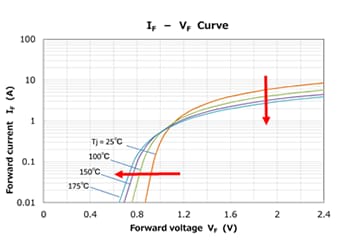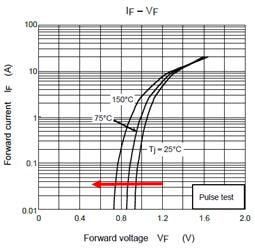-
My ToshibaSemicon
- 반도체 탑
-
애플리케이션Automotive
Body Electronics
xEV
In-Vehicle Infotainment
Advanced Driver-Assistance Systems (ADAS)
Chassis
IndustrialInfrastructure
BEMS/HEMS
Factory Automation
Commercial Equipment
Consumer/PersonalIoT Equipment
Healthcare
Wearable Device
Mobile
Computer Peripherals
-
제품자동차 디바이스
Discrete Semiconductor
다이오드
트랜지스터
로직 IC
Analog Devices
Digital Devices
Wireless Devices
※
: Products list (parametric search)
파워반도체※
: Products list (parametric search)
Isolators/Solid State RelaysPhotocouplers
Digital Isolators
Solid State Relays
Fiber Optic Transmitting Modules
※
: Products list (parametric search)
MOSFETsIGBTs/IEGTs바이폴라 트랜지스터※
: Products list (parametric search)
다이오드※
: Products list (parametric search)
마이크로컨트롤러모터 드라이버 ICIntelligent Power ICs※
: Products list (parametric search)
전원관리IC리니어 IC※
: Products list (parametric search)
범용로직IC리니어 이미지 센서기타 제품용 IC기타 제품용 IC
※
: Products list (parametric search)
-
개발/설계 지원
-
기술 자료
- 구매처
- 부품 번호 & 키워드 검색
- 상호 참조 검색
- 파라미터 검색
- 재고 확인 및 구매
This webpage doesn't work with Internet Explorer. Please use the latest version of Google Chrome, Microsoft Edge, Mozilla Firefox or Safari.
3글자 이상 입력하세요. Search for multiple part numbers fromhere.
The information presented in this cross reference is based on TOSHIBA's selection criteria and should be treated as a suggestion only. Please carefully review the latest versions of all relevant information on the TOSHIBA products, including without limitation data sheets and validate all operating parameters of the TOSHIBA products to ensure that the suggested TOSHIBA products are truly compatible with your design and application.Please note that this cross reference is based on TOSHIBA's estimate of compatibility with other manufacturers' products, based on other manufacturers' published data, at the time the data was collected.TOSHIBA is not responsible for any incorrect or incomplete information. Information is subject to change at any time without notice.
3글자 이상 입력하세요.
What is the temperature characteristic of the SiC-Schottky barrier diode (SBD)?
Figure 1 shows an example of IF-VF curve for each temperature of forward voltage of SiC (Silicon Carbide) SBD. In the region where the IF is small, the forward voltage (VF) decreases as the temperature rises as in the case of Si diodes (Fig-2), but when the current is high, the forward voltage rises with increasing temperature.
This change is caused by heat change of the resistance component of the semiconductor.
There are two factors: (1) diffusion of electrons by lattice vibration and (2) excitation to the conduction band of donor electrons.
Wide-band-gap semiconductors such as SiC have strong bonding force and the influence of lattice vibration becomes larger than in the case of Si. Moreover, because the band gap is large, the donor becomes harder to excite than Si. These facts are considered to indicate the characteristics shown in the figure. For Si diodes, the temperature coefficient is inverted at high current exceeding the rated current.
Therefore, when Si diodes are connected in parallel, there is a possibility of thermal runaway. In SiC SBD, parallel connection can be comparatively easily constructed.



